Best Food Dehydrators of 2024
- April 1, 2024
- 0 comment
Explore the Best Food Dehydrators of 2024, essential tools for enhancing your culinary adventures by preserving a variety of foods. Ideal for both professional chefs and home cooks, these dehydrators efficiently remove moisture, ensuring flavors and nutrients are retained. Our list highlights top models, their features, and performance, helping you choose the perfect addition to your kitchen for homemade jerky, dried fruits, and more.
Our Top Picks of The Best Food Dehydrators of 2024
1. Tribest Sedona Express Food Dehydrator
Technical Specs
- Dimensions: While exact dimensions are difficult to find, it is generally considered compact for dehydrators.
- Number of Trays: 11 stainless steel trays
- Material: BPA-free plastic корпус (korpus, meaning body) and stainless steel trays
- Temperature Range: 77°F to 167°F (25°C to 75°C)
- Timer: Digital timer with two-stage functionality
- Airflow: Central single-fan technology for even drying
- Warranty: 10 years (household use)
The Tribest Sedona Express is a food dehydrator that is marketed as being the world’s first full-featured dehydrator with a compact, kitchen-friendly design. It comes with 11 stainless steel trays, a digital display, and a two-stage temperature-timer. The Sedona Express also has a central single-fan technology that ensures even airflow and rapid dehydration. Tribest offers a 10-year warranty on the Sedona Express for household use.
Pros and Cons of Tribest Sedona Express
Pros
- Large Capacity: With 11 stainless steel trays, you can dehydrate a large amount of food at once.
- Even Drying: The central single-fan technology promotes consistent airflow for even dehydration throughout the trays.
- Digital Controls: The digital display with two-stage temperature control allows for precise settings and potentially better nutrient preservation in some foods.
- Durable Construction: Stainless steel trays are generally more durable and easier to clean than plastic trays.
- Wide Temperature Range: Dehydrate a variety of foods with a temperature range from 77°F to 167°F.
Cons
- Price: The Tribest Sedona Express is on the higher end of the dehydrator market.
- Size: While considered compact for dehydrators, it may still take up counter space.
- Limited Recipe Resources: User reviews mention a limited recipe book, so you may need to look for recipes elsewhere.
- Noise Level: There isn’t publicly available information on noise level, so research user reviews to get a sense of how loud it might be.
2. COSORI Premium Food Dehydrator
Technical Specs
- Power Supply: AC 120V, 60Hz
- Rated Power: 600W
- Temperature Range: 95°F–165°F (35°C–73°C)
- Dimensions: (LxWxH) 13.4 x 17.8 x 12.4 in (340 x 450 x 311 mm)
- Material: Food-grade stainless steel trays
- Timer: Built-in timer that can be set in 30-minute increments for up to 48 hours
- Safety Features: Automatic shutoff and overheat protection
- Includes: 6 dishwasher-safe trays, 1 mesh screen, and 1 fruit roll sheet
The COSORI Premium Stainless Steel Food Dehydrator is a kitchen appliance that allows you to dehydrate a variety of foods, from fruits and vegetables to meat and herbs. It features a digital control panel that allows you to set the temperature and timer, and a rear-mounted fan that circulates hot air evenly throughout the dehydrator. The dehydrator also comes with six stainless steel trays, a mesh screen, and a fruit roll sheet.
Pros and Cons of COSORI Premium Food Dehydrator
Pros
- Powerful and Even Drying: The 600 watts of power and rear-mounted fan ensure efficient and consistent drying throughout the trays.
- Large Capacity: With 6 stainless steel trays, you can dehydrate a significant amount of food at once.
- Wide Temperature Range: The dehydrator offers a good range of temperatures (95°F to 165°F) suitable for various foods, from delicate herbs to jerky.
- Quiet Operation: The dehydrator is known for being quieter than many other models.
- Easy to Use: The digital controls with a timer and automatic shutoff make it user-friendly.
- Dishwasher-safe Trays: Cleaning the trays is convenient.
Cons
- Limited Tray Liners: The dehydrator might not come with enough mesh liners for all trays, and stainless steel can be sticky for some foods. You might need to purchase additional liners or use parchment paper.
- No Window: You can’t monitor the drying process without opening the dehydrator, which can disrupt temperature.
- Timer Doesn’t Indicate Completion: The timer only shuts off the machine, not indicating if your food is finished drying.
- Not ideal for liquids: The fruit leather tray might not be the most efficient for dehydrating large quantities of liquids.
3. Presto Dehydro Digital Electric Food Dehydrator
Technical Specs
- Temperature range: 90° to 165° F (32°C to 74°C)
- Timer: Up to 48 hours
- Number of trays (depending on model): 4 or 6 (expandable up to 8 trays)
- Material: Drying trays and base are BPA-free plastic
- Additional features: Digital thermostat and timer, top-mounted fan and heating element, automatic shut-off
The Presto Dehydro Digital Electric Food Dehydrator is a great appliance for making healthy snacks and preserving food. It has a digital thermostat and timer that allows you to precisely control the drying temperature and time. This ensures that your food is dried evenly and safely. The dehydrator also has a top-mounted fan and heating element that provide consistent airflow for optimal drying. No tray rotation is necessary, so you don’t have to worry about mixing flavors.
Pros and Cons of Presto Dehydro Digital Electric Food Dehydrator
Pros
- Easy to Use: The digital controls and lack of tray rotation make it simple to operate, good for beginners.
- Precise Drying: The digital thermostat allows for setting specific temperatures for different foods, ensuring even and safe drying.
- Expandable Capacity: You can buy additional trays to increase drying capacity as needed.
- Cleans Up Well: The trays and base are BPA-free plastic and dishwasher safe for easy cleaning.
- Multi-functional: Dehydrates a variety of foods from fruits and vegetables to herbs, spices, and even meat for jerky.
Cons
- Limited Temperature Range: The temperature range might not be ideal for all dehydrating needs. Some meats require higher temperatures for safety.
- Potentially Noisy: Some users report that the dehydrator can be noisy during operation.
- Longer Drying Times: Compared to some higher-end models, the Presto Dehydro may take longer to dehydrate foods.
- Less Efficient: The wattage might be higher than some dehydrators, potentially leading to slightly higher electricity use.
- Limited Visibility: Without a clear door, it can be difficult to monitor the drying process without opening the dehydrator, which can disrupt drying times.
4. Hamilton Beach Digital Food Dehydrator
The Hamilton Beach Digital Dehydrator is compact, featuring five stackable drying trays and an additional fine-mesh sheet suitable for drying herbs. Its user-friendly design allowed for effortless operation, producing evenly dried parsley and jerky without any sticking issues. The transparent lid enables easy monitoring of the drying process. The device is equipped with simple, programmable buttons.
Pros and Cons of Hamilton Beach Digital Food Dehydrator
Pros
- Affordable: This dehydrator is a budget-friendly option compared to many other models on the market.
- Easy to Use: The digital controls with a timer and adjustable thermostat make it simple to operate.
- Cleans Up Well: The BPA-free plastic trays and rounded corners make cleaning a breeze.
- Even Drying: The continuous airflow system helps ensure consistent drying throughout the trays.
- Versatile: It comes with 5 trays, a fine-mesh sheet for herbs, and a solid sheet for fruit leathers, offering some variety in what you can dehydrate.
Cons
- Limited Capacity: With only 5 trays, it might not be ideal for dehydrating large batches of food.
- Temperature Inaccuracy: Some users report the dehydrator runs a few degrees cooler than what the setting indicates.
- Bulk and Noise: The dehydrator can be bulky to store and a little noisy during operation.
- Limited Airflow Control: Compared to some higher-end models, this dehydrator might not offer as much control over airflow for specific drying needs.
5. Nesco Snackmaster Pro Food Dehydrator
Technical Specs
- Power: 600 watts
- Temperature Range: 95°F – 160°F (35°C – 71°C)
- Air Flow: Vertical
- Timer: No (This is a common con mentioned in reviews)
- Number of Trays: 5 (expandable up to 12, additional trays sold separately)
- Tray Material: BPA-free plastic
- Tray Diameter: 13.5 inches (0.8 sq. ft. drying area per tray)
- Dimensions: 13.5″ x 13.5″ x 13.5″
- Weight: 7.5 pounds
- Warranty: 1 year limited warranty
The Nesco Snackmaster Pro is a food dehydrator that is popular for its affordability and ease of use. It comes with four trays, but can be expanded to 12 trays with the purchase of additional trays. The dehydrator has a temperature range of 95°F to 160°F, which makes it suitable for drying a variety of foods, such as fruits, vegetables, herbs, and meat.
Pros and Cons of Nesco Snackmaster Pro
Pros
- Affordable: This is a budget-friendly dehydrator, making it a good option for those new to dehydrating or who don’t need all the bells and whistles.
- Easy to Use: With a simple on/off switch and adjustable thermostat, it’s straightforward to operate.
- Produces Evenly Dried Food: The Converga-Flow drying system and top-mounted fan promote consistent drying throughout the trays.
- Expandable Capacity: You can increase the drying space by purchasing additional trays, allowing you to tackle bigger batches.
- BPA-Free Trays: The plastic trays are safe for food use.
Cons
- No Timer: This is a major drawback for many users. You’ll need to keep an eye on your food and manually turn off the dehydrator when finished.
- Thin Trays: The trays may be flimsy and difficult to clean, especially for sticky foods.
- Limited Features: Compared to pricier dehydrators, it lacks features like a digital display for precise temperature control or automatic shut-off.
- Large Footprint: The square design might take up more counter space than some cylindrical dehydrators.
6. Excalibur 9-Tray Electric Food Dehydrator
Technical Specs
- Capacity: 15 square feet of drying space (enough for 9 trays)
- Temperature range: 105°F to 165°F (adjustable thermostat)
- Airflow: Horizontal airflow for even drying without tray rotation
- Timer: Availability depends on the specific model. Some models come with a timer for automatic shut-off.
- Warranty: 10-year limited warranty
The Excalibur 9-Tray Electric Food Dehydrator is a popular choice for home food preservation. It has a large capacity of 15 square feet of drying space, making it ideal for dehydrating large quantities of food at once. It also has an adjustable thermostat that allows you to dehydrate a wide variety of foods, from fruits and vegetables to meat and jerky.
Pros and Cons of Excalibur 9-Tray Electric Food Dehydrator
Pros
- Large Capacity: With 9 trays and 15 sq ft of drying space, it’s great for dehydrating large batches of food at once. Perfect for families or those who like to dehydrate a lot of food for storage.
- Even Drying: The horizontal airflow system ensures consistent drying throughout the trays, eliminating the need to rotate them for even results.
- Temperature Control: The adjustable thermostat allows you to dehydrate a wide variety of foods, from fruits and vegetables (lower temps) to meat jerky (higher temps).
- Timer Option (on some models): A timer allows for “set it and forget it” operation, automatically shutting off when the drying cycle is complete.
- Durable Construction: Excalibur dehydrators are known for their quality and typically come with a 10-year warranty, giving you peace of mind.
Cons
- Price: Compared to some other dehydrators, the Excalibur can be on the higher end price-wise.
- Size: With 9 trays, it can take up a significant amount of counter space.
- Uneven Drying (Some Reviews): While the horizontal airflow is a plus, some user reviews mention occasional uneven drying that might require tray rotation.
- Limited Timer Function (on some models): Not all models come with a timer, which can be a drawback for those wanting automated operation.
7. Magic Mill Food Dehydrator Machine
Technical Specs
- Capacity: 10 stainless steel trays
- Temperature control: Digital adjustable, exact range unspecified
- Timer: Digital adjustable, exact range unspecified
- Airflow: Rear-mounted fan with airflow circulation technology
- Material: Trays – Stainless steel, body – Plastic (likely)
The Magic Mill Food Dehydrator Machine with 10 Stainless Steel Trays is a popular food dehydrator that allows you to make healthy snacks and preserve food at home. It features a rear-mounted fan and airflow circulation technology that promotes even drying, so you don’t need to rotate the trays. It also has a digital adjustable timer and temperature control, so you can set it to the perfect settings for whatever you’re dehydrating.
Pros and Cons of Magic Mill Food Dehydrator Machine
Pros
- Large Capacity: With 10 stainless steel trays, this dehydrator allows you to dehydrate a large amount of food at once, which is ideal for families or people who plan to dehydrate frequently.
- Even Drying: The rear-mounted fan and airflow circulation technology promote consistent drying throughout the dehydrator, eliminating the need to rotate trays for even results.
- Digital Controls: The digital adjustable timer and temperature control offer precise settings for various types of food, ensuring optimal drying conditions.
- Easy Monitoring: The transparent door window allows you to monitor the progress of your food without opening the dehydrator, preventing heat loss and maintaining consistent drying temperatures.
- Easy Cleaning: The stainless steel trays are dishwasher-safe according to some sources, making cleanup a breeze.
Cons
- Limited Spec Information: The exact temperature and timer range is not readily available, making it difficult to gauge its suitability for all dehydrating needs.
- Size: With 10 trays, this dehydrator can be quite large and may require significant counter space.
- Unconfirmed Specs: There are discrepancies regarding the dimensions and wattage across various sources. It’s important to verify these details before purchasing.
- Price: While not the most expensive dehydrator, it might be pricier than some smaller models with fewer features.
- Limited User Reviews: Finding in-depth user reviews might be challenging compared to more popular dehydrator brands.
8. NESCO Gardenmaster Pro Food Dehydrator
Technical Specs
- Capacity: 8 trays (expandable to 30 trays with additional trays sold separately)
- Wattage: 1000 watts
- Temperature control: Adjustable thermostat from 95°F to 160°F
- Airflow technology: Converga-Flow® for even drying
- Material: BPA-free plastic
The NESCO Gardenmaster Pro Food Dehydrator is a high-powered dehydrator that can dry a wide variety of foods quickly and evenly. It comes with 8 trays, but can be expanded to 30 trays for even larger drying capacity. It also has an adjustable thermostat that allows you to set the perfect drying temperature for any food.
Pros and Cons of NESCO Gardenmaster Pro Food Dehydrator
Pros
- Large Capacity: With 8 trays (expandable to 30), it can handle big batches of food for dehydrating.
- Powerful and Even Drying: The 1000 watts of power and Converga-Flow technology ensure fast and consistent drying throughout all the trays, reducing the need for tray rotation.
- Adjustable Temperature: The wide temperature range (95°F to 160°F) allows you to dehydrate a variety of foods at their optimal temperature.
- Easy to Clean: The BPA-free plastic trays and Clean-A-Screens are dishwasher safe for easy cleanup.
- Versatility: It can dehydrate a wide variety of fruits, vegetables, herbs, meats, and even make fruit leathers with the included fruit roll sheets.
Cons
- Price: The NESCO Gardenmaster Pro is on the higher end compared to some dehydrators.
- Size and Storage: It might be bulky for some kitchens, especially with the larger capacity versions. It may not fit easily in cabinets.
- Noise: While quieter than some dehydrators, it’s not completely silent and may generate some noise during operation.
- Limited Warranty: Warranty information is not readily available, but some user reviews mention a shorter warranty period compared to other dehydrators.
- Fragile Trays: Some users report that the trays can be delicate and require careful handling.
What to Look for When Shopping for a Food Dehydrator
- Size and Capacity: Consider the amount of food you plan to dehydrate at one time. Look at the number of trays or racks the dehydrator has and whether it can be expanded with additional trays. Also, think about the space you have available for storing the dehydrator when it’s not in use.
- Adjustable Temperature Control: Different foods require different drying temperatures, so a dehydrator with an adjustable thermostat is essential. This feature allows you to customize the temperature to suit various foods, from herbs to meats, ensuring optimal dehydration results.
- Airflow and Heat Distribution: Even heat distribution and consistent airflow are crucial for evenly dried foods without the need to rotate trays frequently. Some models use a fan, while others rely on convection. Consider which system might work best for your needs.
- Timer and Automatic Shut-off: A timer can be a convenient feature, allowing you to set the dehydrator to run for a specific period and then shut off automatically. This is particularly useful for overnight dehydrating or if you’re away from the kitchen.
- Ease of Use and Cleaning: Look for a dehydrator that is straightforward to operate and easy to clean. Removable trays, dishwasher-safe parts, and a design that minimizes nooks and crannies where food can get trapped will make maintenance easier.
- Material and Durability: Dehydrators are typically made from plastic or stainless steel. Consider which material you prefer in terms of durability, safety (look for BPA-free plastics), and overall aesthetics. Stainless steel models are often more durable but can be more expensive.
- Noise Level: Some dehydrators can be noisy when in operation, so if noise is a concern, look for models known for quieter performance. This is especially important if you plan to run the dehydrator for extended periods.
- Price: Determine your budget and compare it against the features and quality of the dehydrators you’re considering. While cheaper models may offer basic functionality, more expensive dehydrators often come with additional features, larger capacities, and better construction quality.
- Warranty and Support: Check the warranty period and what it covers. A longer warranty can provide peace of mind, indicating the manufacturer’s confidence in their product. Also, consider the manufacturer’s customer support reputation in case you encounter issues or have questions.
- Extra Features and Accessories: Some dehydrators come with added features like digital controls, progress viewing windows, or special trays for making fruit leather or drying small items like herbs and spices. Decide which, if any, of these features are important to you.
Conclusion
In conclusion, the best food dehydrators stand out due to their efficiency, ease of use, and versatility. Key features such as adjustable temperature controls, even airflow, and capacity for expansion make certain models superior. A top food dehydrator should also offer ease of cleaning and durability, ensuring a worthwhile investment for those looking to preserve a variety of foods. Whether for hobbyists or culinary enthusiasts, selecting a dehydrator that aligns with these criteria can enhance the dehydration experience, leading to high-quality, nutritious dried foods.
FAQs
1. What features should I look for in the best food dehydrator?
Look for adjustable temperature controls, even heat distribution and airflow, capacity and expandability, ease of cleaning, durability, and any additional features like timers or digital controls that suit your needs.
2. Can I dehydrate different types of food at the same time?
Yes, you can dehydrate different types of food simultaneously, but it’s important to group foods with similar drying times and temperatures together and be aware that flavors may mix.
3. How long does it take to dehydrate food?
Drying times vary based on the type of food, slice thickness, and the dehydrator’s temperature setting. It can range from a few hours for herbs to over 12 hours for thicker slices of fruit or meat.
4. Are food dehydrators expensive to operate?
Most food dehydrators are energy efficient, especially compared to ovens. The cost to operate depends on the model’s power consumption and the local cost of electricity.
5. Can dehydrating food reduce its nutritional value?
Dehydrating food can cause a slight reduction in some vitamins, but it retains most of the minerals and fiber. The process also concentrates flavors and nutrients, making dehydrated foods nutrient-dense.
6. Is it necessary to pre-treat foods before dehydrating them?
Pre-treatment, such as blanching or dipping in citric acid, is recommended for some foods to preserve color, flavor, and to reduce potential bacteria, especially for items like apples or meats.
7. How do I store dehydrated foods?
Store dehydrated foods in airtight containers, in a cool, dark place to maximize shelf life. Properly dried and stored foods can last for months or even years.
8. Are food dehydrators easy to clean?
Ease of cleaning varies by model. Look for dehydrators with dishwasher-safe trays and minimal nooks and crannies to make cleaning easier.
9. Can I make jerky with a food dehydrator?
Yes, many food dehydrators are suitable for making jerky from meat, poultry, or fish. Ensure your dehydrator can reach temperatures high enough (at least 160°F for meat and 165°F for poultry) to safely dry jerky.
10. How do I know when the food is completely dehydrated?
Food is typically dehydrated when it is leathery and pliable for fruits and vegetables, or brittle for meats. Consult your dehydrator’s manual for specific guidelines.

Joel Cunningham
Forestry AuthorI'm Joel Cunningham, an expert in pruning and weed management with over a decade of experience. My skills are rooted in formal training and extensive practice, focusing on advanced pruning techniques and efficient weed control. I'm known for my quality work, precision, and deep understanding of plant health and soil dynamics. My contributions extend to educational initiatives where I share sustainable practices and advice, establishing myself as a reliable and authoritative figure in the gardening community.


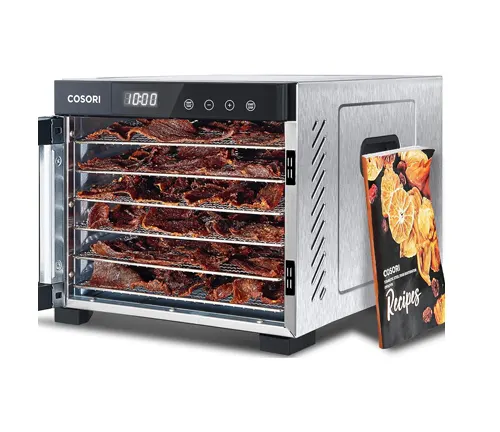
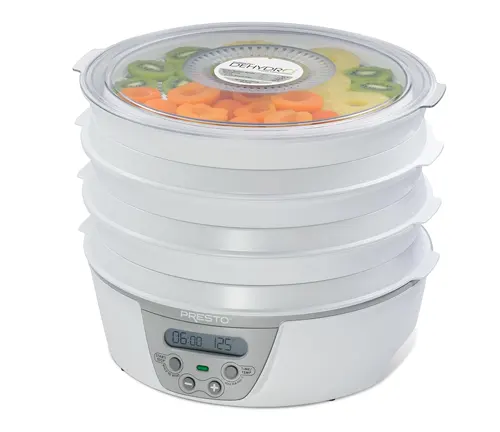

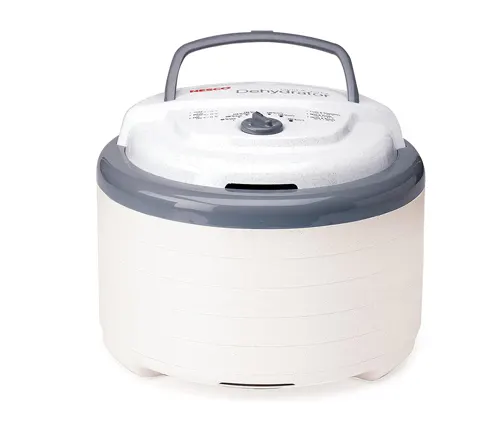
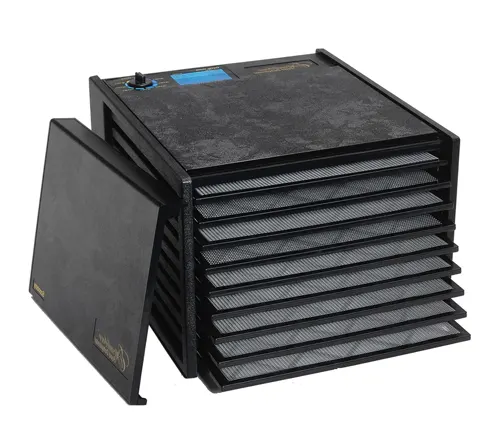

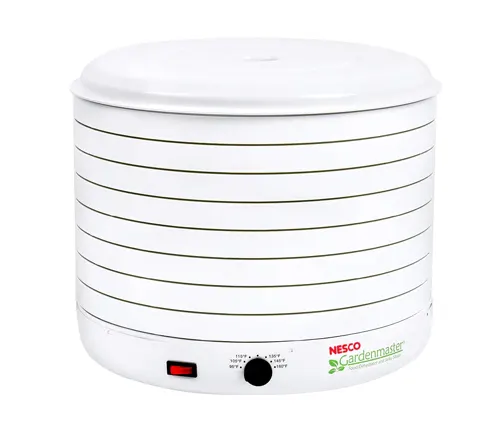










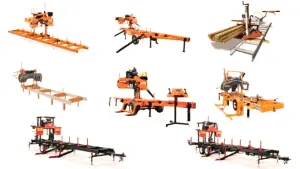

Leave your comment